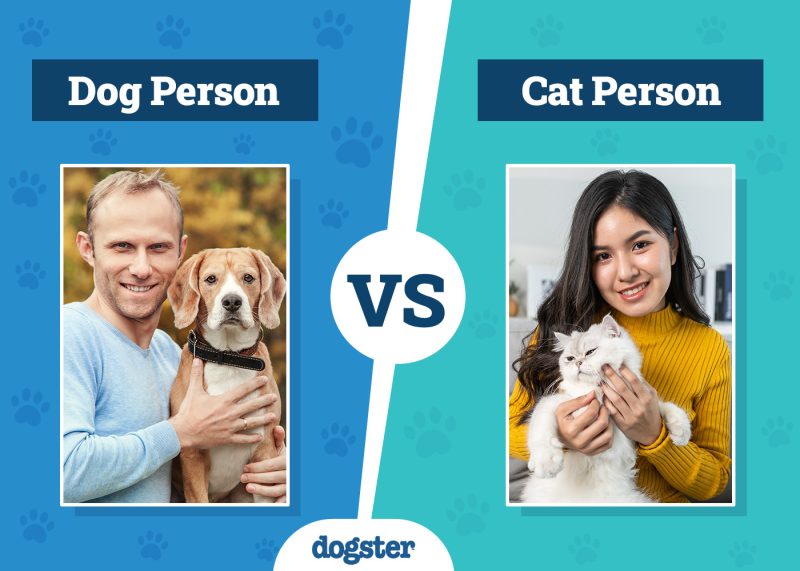In this article
View 3 More +Note: This article’s statistics come from third-party sources and do not represent the opinions of this website.
Few experiences are more gut-wrenching than losing a pet. The owners of the approximately 10 million lost each year know this all too well. However, some pets are returned quicker than you may think, depending on a few factors, including their microchip status.
Although some of the statistics we’ve featured are shocking, others are more positive and uplifting, and they can help you keep your beloved pet safe.

The 15 Missing and Lost Pet Statistics
- Nearly 10 million cats and dogs are stolen or lost annually in the United States.
- Approximately 8.5% of the animals entering shelters are euthanized.
- Nearly 52% of the lost dogs returned to their owners had microchips.
- Only 60% of microchipped pets are registered.
- Approximately 30% of outdoor cats living in a new home try to find their old homes.
- Pet owners are more likely to recover neutered cats than sexually intact felines—57% versus 25%.
- An Ohio State Study showed that 71% of lost dogs were recovered compared to 53% of lost cats.
- Microchipped pets are three times more likely to be reunited with their owners.
- About 34% of lost cats are found within a week.
- 75% of lost cats are found within a third of a mile from where they escaped.
- Cats are 13 times more likely to be found using methods other than shelter visits.
- Keeping lost pets in some states is illegal if you haven’t contacted a shelter or owner within 24 hours of finding them.
- Some lost cats have traveled up to 80 miles to find their homes.
- The 1.5%–4.5% return rate for cats is low for several reasons.
- Incorporating best practices for animal shelters to improve live release rates increased from 35% to 92% for cats and 25% to 87% for dogs.


The Sobering Truth
1. Nearly 10 million cats and dogs are stolen or lost annually in the United States.
(AVMA)
Unfortunately, studies have shown that one in three pets will become lost or stolen in their lifetime. When pets are lost, stolen, or abandoned at higher rates, rescues and shelters become overburdened. However, pet surrenders also make up a sizable percentage of the animals in shelters.
2. Approximately 8.5% of the animals entering shelters are euthanized.
(Shelter Animals Count)
In 2023, the number of euthanized animals increased by 2% compared to the 2021 data. The primary reasons they’re euthanized are space limitations and health problems, but some states euthanize animals more than others.
Half of the euthanasia deaths in the United States occur in Louisiana, Florida, Texas, California, and North Carolina. In North Carolina, approximately 14,400 pets were euthanized in shelters in 2022, and the state had the second-highest kill rate in the country in 2021.

3. Nearly 52% of the lost dogs returned to their owners had microchips.
(AVMA)
Microchipping is one of the best ways to protect your pet, and the statistics show that only 22% of the dogs returned to owners did not have microchips, compared to the 52% that had chips.
One in 50 cats is returned to their owner, but this number increases to two out of every five cats when they’re microchipped.
4. Only 60% of microchipped pets are registered.
(AVMA)
Although microchipping is an effective recovery tool, the chips are useless if they’re not registered or updated when contact information changes.
Shelters and veterinarians use scanners to read the embedded codes in the chips, but pet parents must register them after the chip is inserted and update them if needed. Some shelters and rescue centers include microchipping in the adoption fee, but it’s not an expensive procedure.

Extenuating Circumstances
5. Approximately 30% of outdoor cats living in a new home try to find their old homes.
(PETMD)
Indoor and outdoor cats have homing instincts, similar to a human’s sense of direction, that help them return to their territory. Moving can be a frustrating process for humans, but it’s frightening to cats and takes them a while to adjust.
Although their owners are settling into their new homes, some cats escape and travel several miles to their old residences.
6. Pet owners are more likely to recover neutered cats than sexually intact felines—57% versus 25%.
(National Library of Medicine)
This statistic was taken from a study conducted nearly twenty years ago, but the results are still relevant in 2024. An intact male is more inclined to wander than a neutered cat and is more likely to get into territorial disputes with other felines.

7. An Ohio State Study showed that 71% of lost dogs were recovered compared to 53% of lost cats.
(Science Daily)
Few studies of lost pets exist, but Ohio State researchers examined the lost pet statistics of a southwestern Ohio city to determine whether dogs or cats are returned to their owners more often.
They determined that dogs are recovered more often, and over 30% of the pups were returned because of a visit to an animal shelter or a call from someone who found them.
8. Microchipped Pets Are Three Times More Likely to Be Reunited With Their Owners.
(HASS)
Human Animal Support Services (HASS) conducted a survey of 17 government-funded shelters to determine the effectiveness of microchips. Although more pets were returned with microchips, only 18% of the stray animals in the surveyed shelters were microchipped.

Happy Endings
9. About 34% of lost cats are found within a week.
(MDPI)
It’s disappointing that only 34% of lost cats are recovered in a week, but research has shown that searching your area thoroughly for at least a week improves your odds of locating your pet. Ensuring the contact information on your cat’s collar is updated and posting flyers with your cat’s photo can also help locate them.
10. 75% of lost cats are found within a third of a mile from where they escaped.
(MDPI)
Large, wild felines have vast ranges exceeding several hundred miles, but domestic housecats have smaller territories and stick closer to home. Outdoor-only cats have larger territories than indoor cats, and curious felines are more likely to be found on a neighbor’s property than skittish ones.

11. Cats are 13 times more likely to be found using methods other than shelter visits.
(MDPI)
Some owners locate their pets in shelters, but cats are often returned when they’re wearing an ID tag and someone calls the owners. Calls regarding a photo of a lost cat have helped reunite cats with their owners, and good Samaritans who take lost cats to shelters or vets to get their microchips scanned have also helped.
12. Keeping lost pets in some states is illegal if you haven’t contacted a shelter or owner within 24 hours of finding them.
(CMPD)
Each state has different animal cruelty laws, but most require contacting a rescue organization, shelter, or owner within 24 hours of finding a lost pet. It’s best to keep a lost dog or cat for at least 2 weeks or longer while you try to locate the owner. After the time has passed, you can keep them or try to rehome them.

13. Some lost cats have traveled up to 80 miles to find their homes.
(PetMD)
You may have heard stories about dogs traveling several miles to return home, but it also occurs with felines. However, those traveling up to 80 miles can take 2 ½ years to complete the journey. The Lost Pet Research project also documented a cat that traveled 20 miles in 21 days and one that traveled 38 miles in 6 months.
14. The 1.5%-4.5% return rate for cats is low for several reasons.
(Lost Pet Research)
We’ve discussed how microchips significantly improve the odds of recovery, but when accounting for shelter animals with and without chips, lost cats generally have an inadequate recovery rate.
People are more likely to think a cat is roaming rather than lost when they see one near their homes, and most cats don’t have ID tags. Also, some cats have outdated microchips, and since shelters are often overloaded with cats, some are rejected.

15. Incorporating best practices for animal shelters to improve live release rates increased from 35% to 92% for cats and 25% to 87% for dogs.
(National Library of Medicine)
We’ve discussed the unfortunate circumstances of euthanasia. However, the pet industry has made great strides in trying to reverse these inevitable outcomes. Surprisingly, simple measures, such as low-cost spay/neuter programs, can increase the number of animals finding forever homes. Many involve a mindset change that can have profound positive impacts.

Frequently Asked Questions About Missing and Lost Pets
What should I do if my dog is lost?
(Pet FBI)
The first thing to do is get the word out as quickly as possible. It’s ideal if your pup is a friendly dog everyone in the neighborhood knows, but even if they’re not, starting your search promptly will improve your chances of finding them. It’s best to contact animal shelters, microchip companies, veterinary clinics, and law enforcement first and walk around your area while your friends or family drive around. Then, you can post a message on your social media accounts and distribute lost pet photos in your area.
What should I do if my cat is lost?
(Pet FBI)
Cats are a different story because of their propensity to hide. Your kitty may not be lost but is hiding somewhere you don’t expect. You can search your yard or street before asking your friends or neighbors to help. We recommend that only people who know your cat should help in the search to prevent scaring them even more.
Then, follow the steps outlined for dogs, including contacting the microchip registry if applicable. You can also put their litter box or an aromatic can of wet food outside so they can easily find their way home. Just be aware that if you do have predators in your area this could attract unwanted attention.

What should I do if I find a lost pet?
(Lost Pet Research)
First, see if the animal has an ID tag. If you can’t contact the owner, call a rescue organization or shelter and give them the contact information. If you can safely keep the pet temporarily, you can post a message on social media, place a free “lost pet” ad in the newspaper, and distribute photos.

Conclusion
Losing a pet is an agonizing experience that’s difficult to handle. However, some of the statistics we discussed show that some cats and dogs, particularly those with ID tags and microchips, are returned more often than you would think. Preventing a dog or cat from escaping can be challenging, but if you keep their contact information updated on their microchip, attach an ID tag, and begin your search immediately, you’re more likely to find them quickly.
See Also:




















2 Responses
Thank you so much I appreciate the information regarding a lost animal and the statistics. I am pretty sure when COVID came to light it changed how and where we live and our employment in unemployment skyrocketed.. entire families and pets were separated. I am not sure our country has recovered completely. Inflation cost of living and feeding your family became difficult! Harder to find a job had to decide what was necessary cost wise and what to remove regarding household costs
My Cat Cavi Went missing 9/23/24 We love and miss him very much. I will not give up I will find out what happened to him or I will find him so many scammers preying on people who's pets have gone missing and times have changed people are not as likely to open a door to a stranger as well people don't like getting themselves involved and in my situation there were Alerts and printed flyers, flourescent Posters put up people tore them down individuals texting me due to my ph# on the flyer telling me to "stop with the Lost Cat flyers and respect others property I now drive through their neighborhood calling my Cat after work 5 days a week. I am feeling defeated I feel as though I failed him 😞 as I should have checked that window before I left Saw him on my cameras at 6:45pm in front of my home and my cameras went blurry and he was gone no sightings of him near the house There is open space with a bike path runs near the river (Greenbelt) desperately searching for him. I am lost
Hi Jana, thanks for reaching out. I'm so sorry to hear about Cavi and all you've been through. It sounds like you've done everything possible to find him. Losing a pet, especially in these challenging times, can feel overwhelming, and it’s completely understandable that you’re feeling defeated.
Don't give up hope! Many lost pets return even after weeks or months. Cats are clever and resilient, and he may be hiding nearby, waiting for the right moment to come home. You might also consider enlisting the help of local pet search groups or using motion-activated cameras with food as bait in case he’s returning when you’re not around. Above all, please don’t blame yourself. You’ve done more than many could or would, and Cavi is lucky to have someone who cares so deeply. 🙂